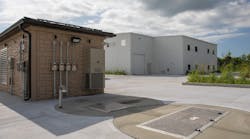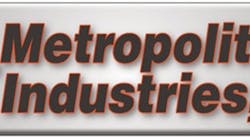Metropolitan Ind., www.metropolitanind.com, 815.886.9200
Mechanical equipment in lift stations do wear over time but also can be a contributing factor to population growth, city development, improvements in technology and safety often mean that, over time, lift stations just cannot keep up forever and sometimes changes and updates are in order. For example, when the Parkwoods lift station was installed in Metropolitan Ind.’s hometown of Romeoville, Ill., in the early 1960s, a small dry pit, packaged lift station was exactly what the municipality needed.
In the mid 1970s, to update the older technology, the existing system was retrofitted with submersible pumps and controls to provide once again, everything the community needed. Finally, in the 1980s, a second retrofit took place as pumps, controls and piping were replaced to handle the village’s needs for growth. However, there eventually comes a point when retrofits no longer make sense and replacement is the best option. For Romeoville, that point was reached in 2018 and, once again, Metropolitan Ind. was ready for the job.
A Newer, Safer Option
Starting from scratch meant we were able to take a step back, address the current limitations, as well as consider Romeoville’s needs today and in the future, and design a lift station that would be poised to grow with the community for at least another 50 years. First and foremost, that meant moving the location of the station a few hundred feet away to allow for a larger wet well and the development of a totally new system.
In an effort to provide significant improvements, the new location allowed for significant added features. For one, we installed safety grates on all hatches to eliminate fall risks, but safety was only part of the goal. Metropolitan also knew that building a new system in a new location would offer the opportunity to take advantage of better technology and to prepare the new equipment to withstand the around-the-clock demands of a busy industrial park, so it used an advanced coating, polyurea to protect the wet well and valve vault. Metropolitan also increased the number of pumps from two to three and installed pumps with greater capacity than the original lift station to allow the new location to accommodate future growth and help the municipality better handle the infiltration issues it had been facing until a more permanent remedy is put in place. While the old system was significantly surcharged, risking backflow to users, the new setup is equipped to help alleviate old shortcomings.
Standing Out by Blending In
To provide the new lift station with all the controls necessary to keep it up and running, Metropolitan Ind. also constructed a prefabricated building. The exterior features a stone finish that is now the standard exterior for Romeoville’s municipal utility buildings (a second structure of this design—and others may be forthcoming) and the interior keeps operators out of the elements when maintenance work is needed.
Metropolitan also tried to keep both emergency and routine work in mind by including flow meters on each pump in the valve vault to help operators monitor the efficiency of each pump. As an added benefit, a backup generator is now part of the station, eliminating the need to haul a generator to the site in anticipation of potential lost power.
All of this new equipment also is connected via cellular data through Metropolitan’s MetroCloud SCADA, so the municipality can remotely monitor nearly every aspect of operation, including temperature, humidity, generator use and people entering the building.


